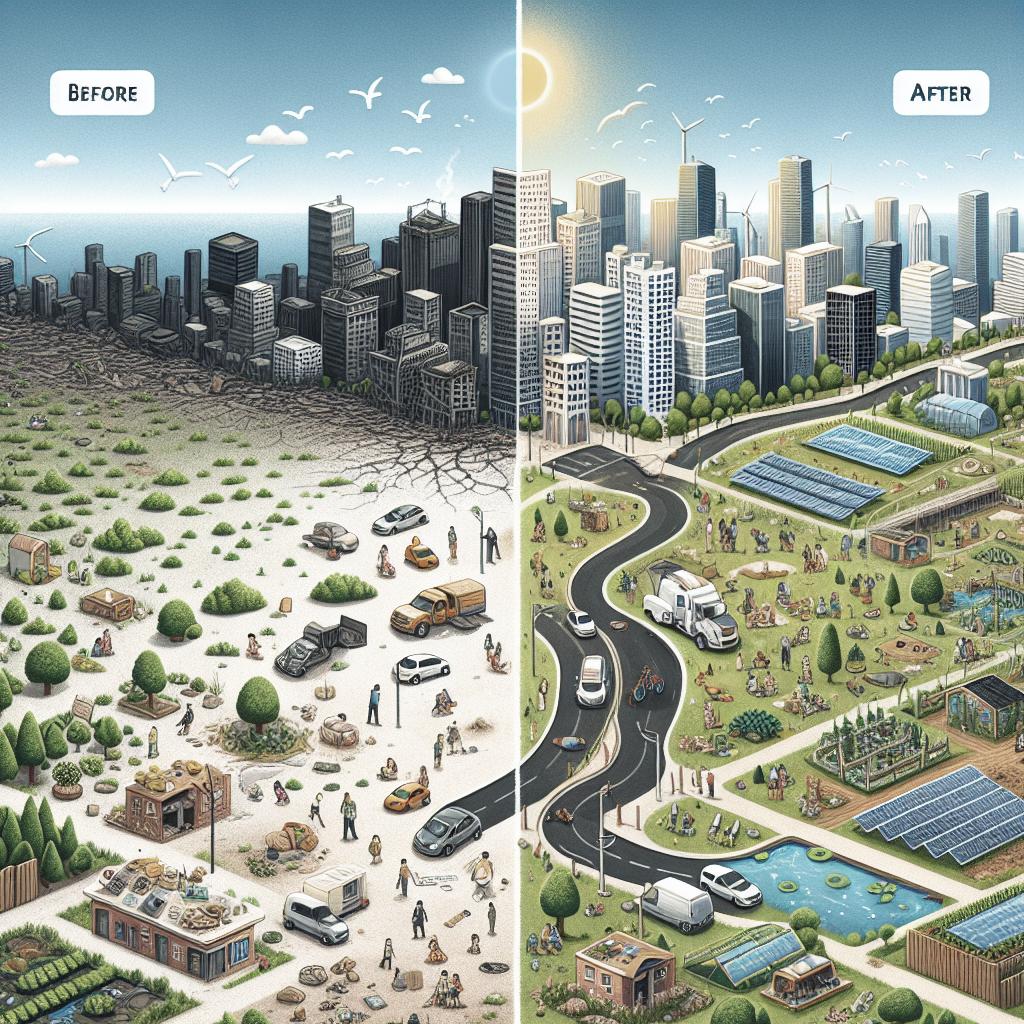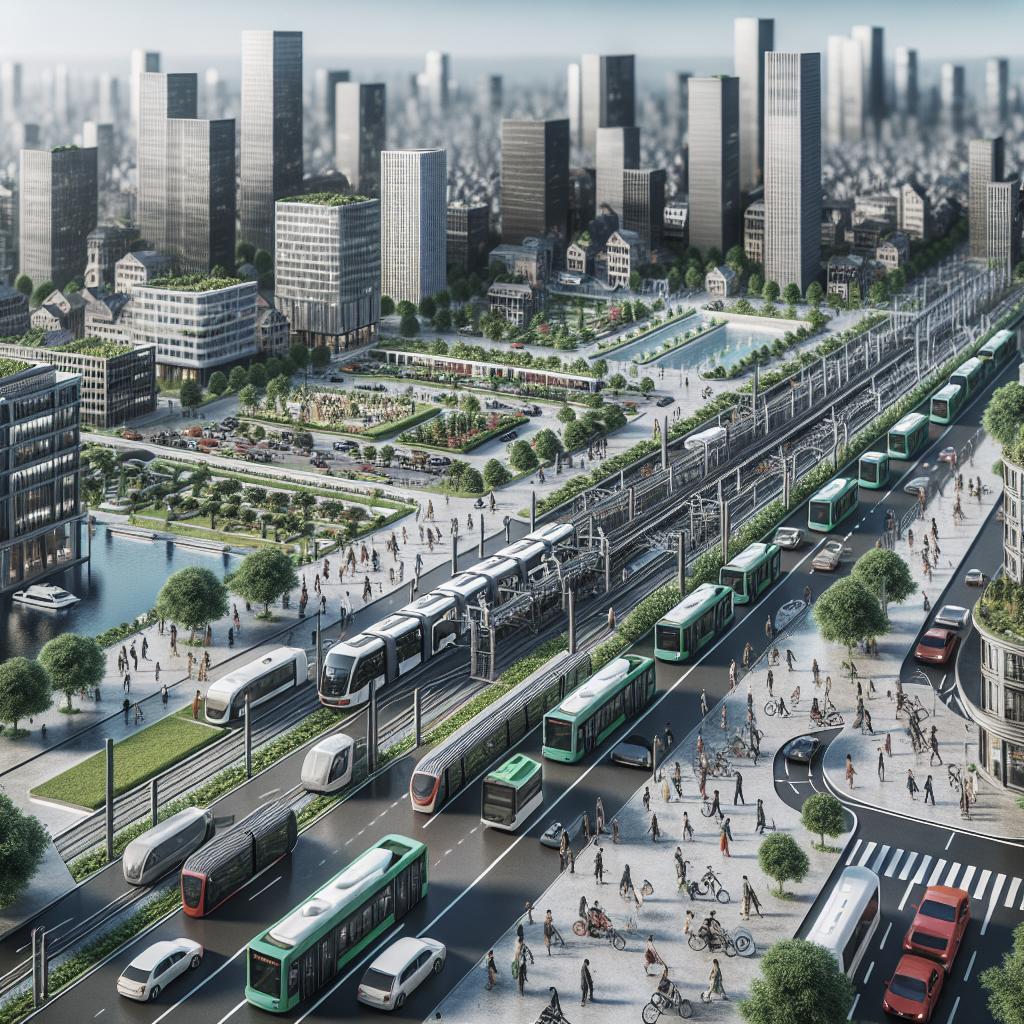<>
— Urban development, the practice of planning and growing city spaces to better serve their inhabitants, comes with numerous benefits ranging from economic growth to enhanced living conditions. This blog post examines these benefits comprehensively, exploring how urban planning is crucial for unlocking economic potential, tackling emerging challenges, and driving sustainable development. We’ll also delve into USAID’s approach to urban development, key resources necessary for efficient urban planning, and offer insights from active projects around the globe. —
As cities continue to grow, so do their challenges and complexities. Urban planning presents an all-encompassing solution to those challenges.
As urban populations swell, cities face a myriad of complications, including environmental degradation, inadequate infrastructure, and social inequities. Effective urban planning is essential to address these multifaceted issues. By strategically utilizing land resources, integrating green spaces, and investing in robust infrastructure, cities can enhance the quality of life for their inhabitants. Urban planners also focus on promoting sustainable practices that balance the needs of the present with those of the future, ensuring long-term viability of urban environments. Additionally, urban development aids in mitigating the adverse effects of rapid urbanization. It provides a framework for addressing congestion, pollution, and housing shortages, while fostering inclusive and resilient communities. With careful planning and implementation, cities can transform into vibrant hubs of economic and social activity.
You are here
Urban development places cities at the forefront of economic, social, and environmental innovation. It focuses on creating spaces that are not only functional but also enriching, fostering a sense of community and belonging among residents. With well-planned urban areas, cities can become more adaptable to change and better equipped to handle future challenges. Urban development underscores the significance of efficient mobility, accessible public services, and sustainable building practices. These elements are pivotal in enhancing the overall urban experience, making cities more livable and capable of attracting talents and investments from across the globe.
Unlocking the Economic Potential of Cities
Urban development plays a critical role in boosting the economic potential of cities. By improving infrastructure, enhancing public transportation, and developing mixed-use areas, cities can attract businesses and create job opportunities. This, in turn, stimulates local economies, increases property values, and fosters an attractive environment for investment. Furthermore, well-planned urban areas tend to have higher productivity and innovation rates. The concentration of diverse industries, educational institutions, and research centers within urban centers creates a fertile ground for collaboration and economic growth. This synergy between different sectors can result in the creation of cutting-edge technologies and businesses that drive the urban economy forward. Urban development also encourages entrepreneurship by providing dedicated spaces for startups and small businesses. Incubators, co-working spaces, and innovation hubs within urban areas offer the resources and support necessary for these enterprises to thrive, contributing to a vibrant and dynamic urban economy.
Challenges
Urban development is not without its challenges. Rapid urbanization often leads to a strain on existing infrastructure, resulting in congestion, pollution, and overstretched public services. Balancing growth with sustainability is a delicate task that requires careful planning and consideration. Another significant challenge is ensuring that urban development benefits all residents, not just a select few. Social equity in urban planning involves addressing issues related to housing affordability, access to public services, and opportunities for all socio-economic groups. This requires inclusive policies that involve community participation and address the needs of marginalized populations. Lastly, climate change poses a substantial challenge to urban development. Cities must adopt resilient and adaptive strategies to mitigate the impact of climate-related events such as flooding, heatwaves, and rising sea levels. This involves incorporating sustainable practices into urban planning, such as using green building materials, promoting energy efficiency, and enhancing green spaces.
USAID’s Approach
The United States Agency for International Development (USAID) plays a pivotal role in promoting sustainable urban development worldwide. USAID’s approach focuses on building resilient and inclusive urban communities through strategic planning, capacity building, and collaboration with local stakeholders. USAID emphasizes integrated urban planning that considers economic, social, and environmental factors. This holistic approach ensures that urban development projects are sustainable and address the diverse needs of urban populations. By working closely with local governments, civil society, and the private sector, USAID fosters a collaborative environment that supports the successful implementation of urban development initiatives. Moreover, USAID places a strong emphasis on building local capacity. By providing technical assistance, training, and resources, USAID empowers local communities to take ownership of their development processes. This approach promotes long-term sustainability and ensures that urban development initiatives are tailored to the unique context and challenges of each city.
Key Resources
Effective urban development requires a range of key resources, including funding, technology, and expertise. Access to financial resources is crucial for the successful implementation of urban development projects. Governments, international organizations, and private sector partners can provide the necessary funding for infrastructure development, housing projects, and public services. Technology also plays a vital role in modern urban development. Smart city technologies, such as data analytics, IoT, and AI, enable cities to optimize their operations, improve service delivery, and enhance the quality of life for residents. These technologies can be used to manage traffic, monitor environmental conditions, and provide real-time information to citizens. Lastly, expertise in urban planning, architecture, and environmental science is essential for effective urban development. Professionals in these fields bring valuable knowledge and experience to the planning and implementation of urban development projects. By leveraging their expertise, cities can develop innovative solutions to the complex challenges they face.
Insights & Updates
Staying informed about the latest trends and developments in urban development is crucial for stakeholders involved in the field. Regular updates on best practices, technological advancements, and policy changes can provide valuable insights that inform urban planning efforts. One of the current trends in urban development is the shift towards sustainability and resilience. Cities are increasingly adopting green building practices, renewable energy sources, and climate adaptation strategies. These efforts are aimed at reducing the environmental impact of urban areas and ensuring their long-term viability. Another important development is the focus on social inclusion in urban planning. Cities are implementing policies and programs that promote affordable housing, access to public services, and opportunities for all residents. This approach ensures that urban development benefits everyone, regardless of their socio-economic status.
Projects
Urban development projects around the world provide valuable examples of innovative and effective urban planning. One notable project is the Medellin MetroCable in Colombia, which has transformed the city’s transportation system and improved access for residents in hillside communities. The project has not only enhanced mobility but also contributed to social inclusion and economic development. Another exemplary project is the High Line in New York City, a linear park built on a disused elevated railway. The High Line has become a cultural and recreational space that attracts millions of visitors each year. It has also spurred economic development in the surrounding neighborhoods, demonstrating the potential of adaptive reuse in urban development. In Asia, the Songdo International Business District in South Korea is a prime example of a smart city development. Songdo leverages advanced technologies and sustainable practices to create a highly efficient and livable urban environment. The project showcases the potential of smart city solutions in addressing urban challenges and improving the quality of life for residents. —
| Section | Key Points |
|---|---|
| Urban Planning Solutions | Addresses environmental degradation, overcrowding, promotes sustainability. |
| You are here | Focuses on enhancing urban experiences; emphasizes accessibility and sustainability. |
| Unlocking Economic Potential | Improves infrastructure and public transport, fosters innovation and entrepreneurship. |
| Challenges | Strain on infrastructure, social inequities, climate change. |
| USAID’s Approach | Integrated planning, building local capacity, fostering collaboration. |
| Key Resources | Funding, technology, professional expertise. |
| Insights & Updates | Trends in sustainability, inclusion, policy changes. |
| Projects | Examples include Medellin MetroCable, NYC High Line, Songdo Smart City. |
— By embracing urban development, cities can navigate their challenges and unlock immense potential for economic growth, improved living conditions, and sustainable future. Coordinated efforts, backed by resources and strategic planning, pave the way for dynamic, resilient, and inclusive urban landscapes.


